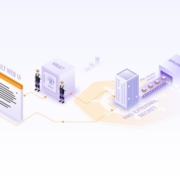Créer une solution d’email de notification d’alarme de métrique de journal personnalisé CloudWatch avec Terraform est une tâche complexe, mais pas impossible. Découvrez comment le faire facilement !
Comment intégrer des messages de journal d’application dans les notifications CloudWatch Alarm
En tant que scientifique informatique enthousiaste, je vais vous montrer comment intégrer les messages de journal d’application dans le corps de l’e-mail de notification lorsque l’alarme CloudWatch est activée.
Amazon CloudWatch est un service qui permet aux clients de surveiller une valeur de métrique ou une expression mathématique pour la métrique et de déclencher des actions lorsque la valeur dépasse une certaine limite. Ces alarmes peuvent être utilisées pour déclencher des notifications envoyées via Amazon SNS, e-mail, SMS, etc. Il est donc nécessaire que les messages de journal d’application soient inclus dans le message de notification de l’alarme afin que le personnel opérationnel puisse facilement identifier la cause racine de la notification de l’alarme.
Afin de mettre en œuvre cette solution, nous devons disposer des prérequis suivants : un compte AWS, Terraform installé et prêt à l’emploi, Python version 3.9 ou ultérieure, Node.js version 14.x ou ultérieure. Nous allons maintenant examiner l’architecture cible qui sera utilisée pour mettre en œuvre cette solution. L’architecture cible est représentée par le diagramme suivant et montre les composants impliqués dans cette solution ainsi que leurs interactions.






